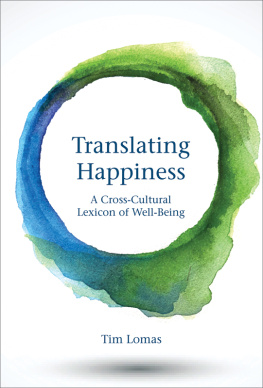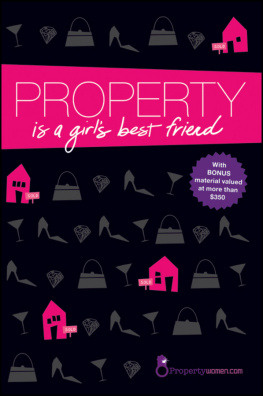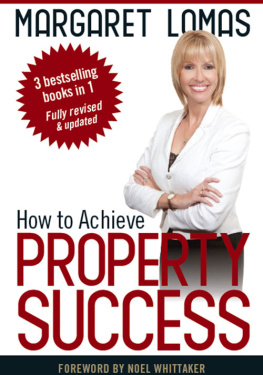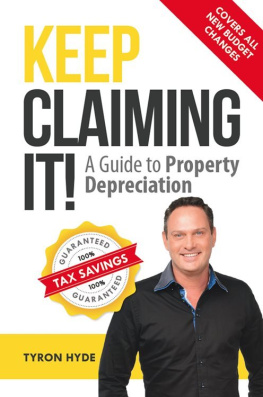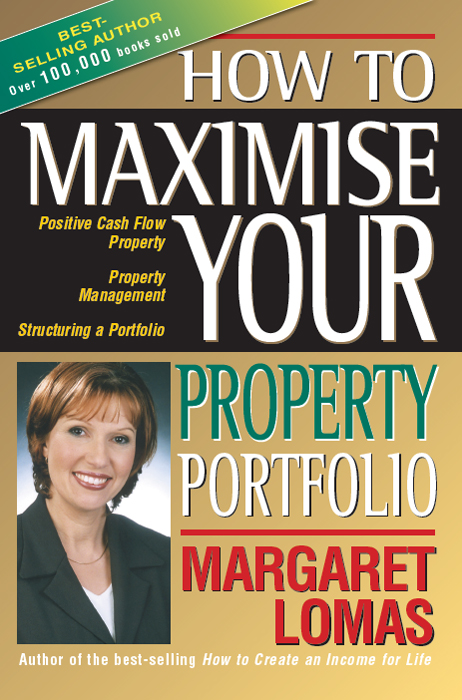Contents

Also by Margaret Lomas
How to Make Your Money Last as Long as You Do
How to Invest in Managed Funds
How to Create an Income for Life
The Truth about Positive Cash Flow Property
A Pocket Guide to Investing in Positive Cash Flow Property
20 Must Ask Questions for Every Property Investor
First published March 2003 by Wrightbooks
an imprint of John Wiley & Sons Australia, Ltd
42 McDougal Street, Milton, Qld 4064
Office also and Melbourne
Typeset in 11.5/13 pt Minion Regular
Reprinted with revisions and tax updates November 2003, February 2005; reprinted March 2008
Margaret Lomas 2003
The moral rights of the author have been asserted
National Library of Australia Cataloguing-in-Publication data:
Lomas, Margaret.
How to maximise your property portfolio.
Includes index.
ISBN 0 7016 3759 5.
1. Real estate investment. I. Title.
332.6324
All rights reserved. Except as permitted under the Australian Copyright Act 1968 (for example, a fair dealing for the purposes of study, research, criticism or review), no part of this book may be reproduced, stored in a retrieval system, or transmitted in any form or by any means without the prior permission of the publisher. All inquiries should be made to the publisher at the address above.
Cover design by Rob Cowpe
Disclaimer
The material in this publication is of the nature of general comment only, and neither purports nor intends to be advice. Readers should not act on the basis of any matter in this publication without considering (and if appropriate, taking) professional advice with due regard to their own particular circumstances. The author and publisher expressly disclaim all and any liability to any person, whether a purchaser of this publication or not, in respect of anything and of the consequences of anything done or omitted to be done by any such person in reliance, whether whole or partial, upon the whole or any part of the contents of this publication.
Special dedication
I would like to dedicate this book to my much loved father. Dad always read my manuscripts before they were published, but sadly he passed away unexpectedly before this one was ready. He set an example for me and taught me to strive to be the very best I could be. His confidence in my abilities served to motivate and inspire me. He was truly a great man.
To my wonderful family
My husband Reuben, who stays true, caring and supportive no matter how rough the terrain becomes.
My son Mark, for his humour and positive attitude.
My daughter Kristy for her perseverance, energy and commitment to life.
My daughter Belinda, a joy to behold who lights up everyones life.
My son Michael, who cares deeply about us all and shoulders all our burdens.
My daughter Rebecca, whose goal setting and sense of justice will see her successful in all she does.
Thank you Steven for the care you give to us all.
Thank you to my mother and father for being there and encouraging me.
And lastly to my brothers and sisters who continue to put up with me and encourage me always.
Preface
Since my first book How to Make Your Money Last as Long as You Do was released, there has been much heated debate, even argument, over the best and most profitable way to invest in property. Prior to its release, little was known about the concept of investing for cash flowit seemed commonly accepted that property investors did so for the sole purpose of realising a large gain upon eventual sale, after which they would spend their lives in the lap of luxury, reaping the rewards afforded them by their genius. Often, the price for this gain was the pain of losing money each week as inevitably returns on this sort of property rarely provided enough funds to pay associated outgoings. Property investors accepted that this shortfall would be met from their own pockets and satisfied themselves with the small reprieve provided by the tax advantages this contribution could bring.
When Robert Kiyosaki began to warn investors against any investment requiring a cash input, effectively espousing that positive cash flow was an absolute must, few property investors realised that this also applied to them. Negative gearing had become the catchcry of high-income earners all over the country, and it seemed that this wonderful concept of positive cash flow, however much sense it made, could not be applied to property.
There were, however, the smug few who, perhaps unintentionally, had chosen property which did in fact deliver this elusive positive cash flow. These investors were enjoying the benefits of property ownership without the often daily stress of finding that extra $50 or so a week to support the property. Unwittingly, they had acquired true cash flow investments, often more than one, and they quietly accumulated more and more property, waiting for the time when they would retire from the paid workforce and live off the rental income.
I recall clearly when I first realised the value to me of a positive cash flow investment property. My first property typically cost me around $45 a week from my own pocket, and this was at a time when my children were small and the budget could ill afford any further beatings. I had increasing equity in the house in which I lived but could see no way that I could leverage this as I had no cash left to support another property, even when interest rates were at an all-time low.
I literally fell across a property one day which had exceptional rent return for the purchase price. By my calculations, this particular property could deliver something like $60 a week into my pocket, even taking into account a possible low occupancy. I remember sitting down and going through the list of why I wouldnt buy this property, and the only thing that kept cropping up was that I could not be sure of the growth potential. But then I began to realise that I could not be sure of the growth potential on any property I was to buy. My budget was so tight that even if the absolute guarantee of huge capital gain was presented to me on a platter, I would be unable to take advantage of it anyway! Far better to at least have a property which, although it may not grow so fast in value, would continue to deliver a return, than to have no property at all.
As it turns out, this very property is one of the greatest performers in my portfolio, having almost tripled in value in just three and a half years. I could never have guessed thisand certainly none of the so-called experts I consulted at the time predicted this huge growth. But, even if it had not experienced this exceptional capital gain, the property delivered on its promise of great cash flow and this cash flow afforded me the opportunity to reduce debt and so leverage again anyway, even without the growth.
Property investing does not take any great talentbut it certainly takes a whole lot of common sense. And while the debate rages on about when and where you should invest, and with what aim (cash flow or capital gain) you may well be wasting time if you are sitting back waiting to see who is right. If you accept that everyone may be right and then think about what is right for you, you can decide for yourself which method of property investing suits you best.
In the past year and a half, positive cash flow property has virtually become the buzzword of the investment scene. Clever marketeers have seen the opportunity to use this concept (with few truly understanding what it means) to sell their property, and discussion rages on websites and in property clubs all over the country. Yet still confusion prevails, and every day more and more questions are asked.



